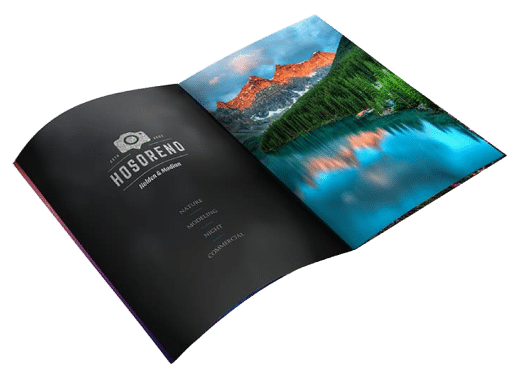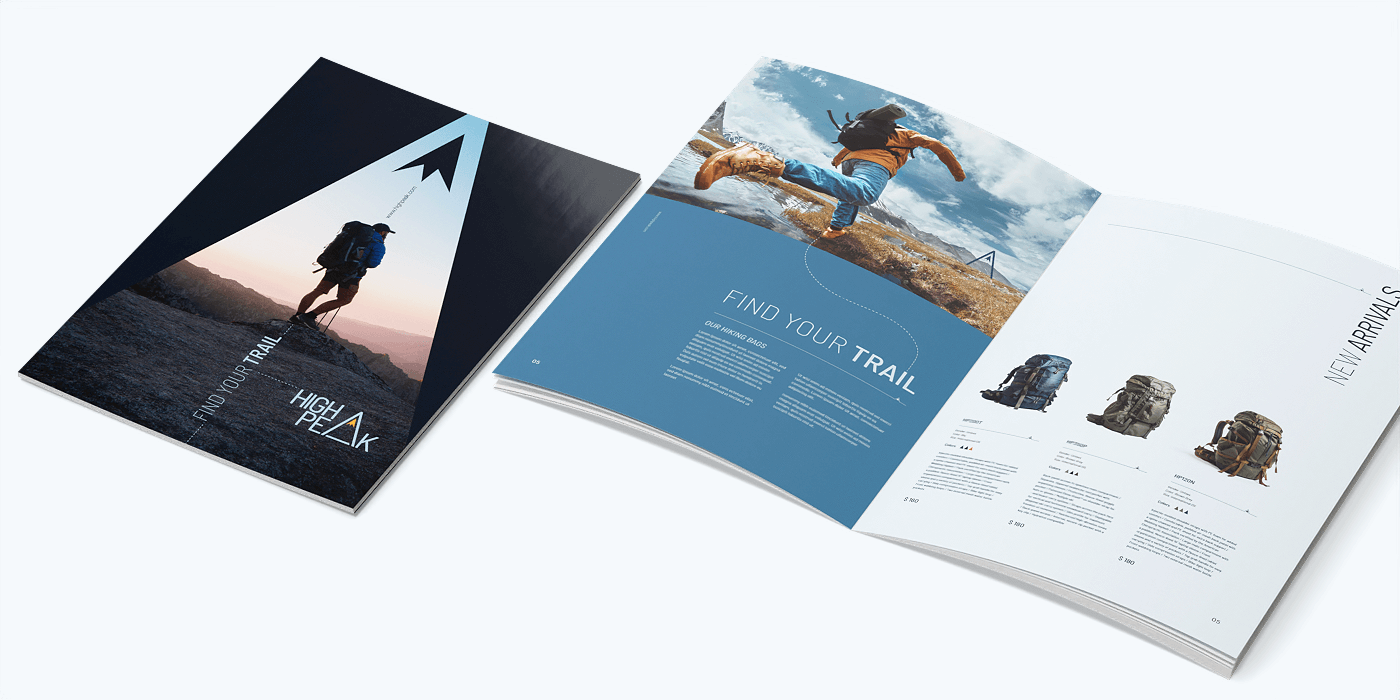How Eco-Conscious Brands Are Using Green Booklet Printing Methods
How Eco-Conscious Brands Are Using Green Booklet Printing Methods
Blog Article
The Vital Guide to Comprehending Pamphlet Printing Options and Techniques
The process of pamphlet printing entails multiple factors to consider that can greatly influence the last product. From choosing the suitable style and dimension to comprehending the subtleties of binding techniques, each selection plays an important duty. Additionally, factors such as paper stock and printing techniques further influence the efficiency of the booklet. As one browses these alternatives, it becomes crucial to grasp just how they interconnect and what that means for the total outcome.
Understanding Booklet Sizes and styles
When taking into consideration booklet printing, recognizing the numerous styles and sizes offered is necessary for attaining the preferred discussion. Brochures can be produced in various layouts, consisting of saddle-stitched, spiral-bound, and perfect-bound, each offering distinctive advantages. Typical sizes vary from basic letter (8.5 x 11 inches) to smaller sized alternatives like A5 (5.8 x 8.3 inches), enabling versatility based upon content and target audience.Selecting the proper size can affect both the layout and reader interaction. Larger dimensions could suit aesthetically driven content, while smaller sized layouts might be a lot more portable and user-friendly. Additionally, the number of web pages impacts the choice of binding method, as thicker pamphlets might need stronger bindings. Eventually, comprehending these facets enables for a more tailored method, making sure that the last product aligns with the desired message and aesthetic, boosting the general effectiveness of the interaction.
Selecting the Right Paper Stock

Binding Approaches: Options and Factors To Consider
When it comes to binding techniques for booklets, numerous options are offered, each with distinct advantages. Saddle stitch binding uses an economical service for thinner booklets, while excellent binding methods supply an even more sleek look for thicker magazines. Wire-O binding attracts attention for its resilience and convenience of use, making it perfect for documents that require adaptability.
Saddle Stitch Binding
Saddle stitch binding uses a useful and cost-effective remedy for assembling pamphlets, making it a preferred selection amongst organizations and publishers. This binding method entails folding sheets of paper in half and stapling them along the fold line, developing a cool and well organized look. Normally ideal for booklets with a lower web page count, saddle stitching is optimal for publications, sales brochures, and instructional materials. The simplicity of this strategy enables quick manufacturing and is typically preferred for short runs or marketing items. However, it is vital to keep in mind that saddle stitch binding may not be ideal for thicker brochures, as the back may not hold up under enhanced weight. Generally, it continues to be a reliable option for many printing tasks.
Perfect Binding Methods
Perfect binding is a widely made use of method that provides a expert and polished finish to publications and brochures. This technique entails gluing the pages with each other at the back using a solid adhesive, enabling a tidy side and the ability to hold a bigger variety of web pages contrasted to saddle stitching. Perfect binding is specifically appropriate for thicker pamphlets, such as catalogs and annual records, where a sturdy, flat back is wanted. In addition, it uses the choice for a printed cover that can be developed to improve visual charm. Nevertheless, factors to consider such as page count, paper weight, and the intended use the brochure ought to be thought about, as they can affect longevity and general top quality.
Wire-O Binding Alternatives
Wire-O binding, understood for its durability and adaptability, uses an outstanding alternative for brochures that call for very easy web page transforming and a professional appearance. This binding method utilizes a collection of metal loopholes that hold web pages securely, permitting them to exist flat when open. It is particularly suitable for discussions, catalogs, and guidebooks due to its durable nature. Wire-O binding is readily available in numerous colors and sizes, suiting different web page matters and densities. In addition, it allows the addition of tabs and covers, improving the brochure's overall visual. Factors to consider for Wire-O binding consist of the choice of wire shade, the dimension of the loopholes, and the extent of personalization wanted, all of which can exceptionally affect the final product's look and capability.
Digital vs. Offset Printing: Which Is Best for You?
When choosing a printing technique for booklets, comprehending the distinctions in between electronic and balance out printing is vital. Digital printing uses contemporary technology to produce premium prints promptly and cost effectively, making it suitable for brief runs or tasks requiring quick turnaround times. It permits for customization, providing the capability to print on-demand with marginal waste.In contrast, counter printing is a traditional approach that masters producing big amounts with consistent quality. It entails transferring ink from a plate to a rubber covering, then to the paper, which results in dynamic shades and specific details. Balance out printing typically needs longer arrangement times and is extra cost-efficient for bigger volumes.Ultimately, the option in between electronic and offset printing depends on project needs, budget, and desired amount. For little, time-sensitive projects, electronic could be the ideal choice, while countered may be preferable for bigger, top quality productions.

Designing Your Booklet: Tips and Best Practices
When developing a brochure, careful focus to layout, font choice, and color use can substantially improve its effectiveness. A well-structured layout guides the viewers's eye, while ideal fonts assure readability and communicate the wanted tone. Additionally, efficient usage of color can stimulate feelings and highlight vital information, making the general layout a lot more impactful.
Selecting the Right Layout
How can one efficiently choose the ideal format for a brochure? First, my response it is necessary to examine the booklet's function and target market. A tidy, organized format enhances readability and engagement. Using a grid system can assist in lining up components continually, creating an expert appearance. Additionally, integrating visual pecking order with differing dimensions and placements of pictures and message can assist the visitor's eye and emphasize essential details. It is additionally important to leave sufficient white room, which prevents overcrowding and permits for far better emphasis. Finally, examining various formats through mock-ups can provide understanding right into how the style performs in real-world situations, guaranteeing that the last product meets both visual and practical requirements.
Selecting Proper Font Styles
An appropriate font can substantially boost the total style of a brochure, matching the design and reinforcing the content's message. The choice of fonts must take into consideration readability, particularly for body message, as it assures the info is accessible to all readers. Sans-serif font styles are frequently liked for electronic styles, while serif typefaces can lend a typical feeling in printed products. It's suggested to limit font options to 2 or 3 to keep aesthetic comprehensibility. Additionally, font style size plays an important role; headings should be unique yet not frustrating, while body text must be comfy for analysis. When picking typefaces, alignment with the brochure's style and target audience is crucial for reliable communication and aesthetic appeal.
Effective Use Color
Shade functions as a powerful tool in pamphlet design, forming perceptions and leading reader emotions. It can stimulate feelings of calmness, excitement, or depend on, depending upon the hues selected. Developers should think about color theory principles, ensuring that the picked palette lines up with the booklet's message and target audience. For example, using cozy colors like red and orange can produce urgency, while cooler tones like eco-friendly and blue foster tranquility.Additionally, comparison plays a crucial role; corresponding shades can enhance readability and visual charm. Uniformity in color usage throughout pages even more reinforces brand name identity and communication. Eventually, effective color execution not only captures focus yet likewise enhances the pamphlet's function, making it a crucial aspect of effective layout.
Finishing Touches: Coatings and Unique Effects
While numerous think about the web content and layout of a pamphlet the most important aspects, the completing touches, such as coverings and special effects, play a necessary role in enhancing its general appeal. Coatings can offer security and sturdiness, ensuring that the pamphlet endures deterioration. Matte surfaces supply an advanced, non-reflective surface area, while shiny finishes can make colors appear even more attractive and lively. Unique effects, like embossing or aluminum foil marking, include a tactile measurement that can produce a memorable perception. These techniques can highlight certain areas, drawing attention to crucial info or creating visual interest. In top article addition, UV finishing can provide a high-shine coating that elevates the total look.Together, these finishing touches not only improve the brochure's aesthetic yet additionally communicate professionalism and trust and focus to information, ultimately leaving a long-term influence on the visitor.
Expense Factors To Consider for Pamphlet Printing
Recognizing the different cost considerations for booklet printing is important for organizations and businesses intending to enhance their budgets. Secret elements affecting costs include the selection of binding, ink, and paper methods. Higher high quality materials, such as premium paper or specialized inks, generally boost the overall expenditure. In addition, the size and web page matter of the pamphlet play a significant function; bigger brochures require more sources and time to produce.Another essential factor to consider is the printing method, whether digital or offset, as each has its own rates framework and viability for various amounts. Companies should likewise factor in style expenses, which can differ based on intricacy and making use of specialist services. Inevitably, shipping and handling fees can include in the total, specifically for large orders. By assessing these components, organizations can make informed decisions that align with their monetary capacities while attaining the desired top quality in their printed materials.
Frequently Asked Inquiries
What Are the Ecological Impacts of Booklet Printing?
The environmental effects of booklet printing include logging from paper manufacturing, carbon exhausts from transport, and waste generation from thrown out materials - Booklet Printing. Sustainable practices, such as using recycled paper and green inks, can alleviate these effects
Exactly How Can I Ensure Shade Precision in My Booklet?
To ensure shade precision in a booklet, one must make use of calibrated monitors, use specialist color accounts, carry out test prints, and select top quality printing services that supply shade matching and proofing choices for finest results.
What Is the Regular Turn-around Time for Pamphlet Printing?
The typical turnaround time for brochure printing varies relying on the complexity and quantity - Booklet Printing. Generally, it varies from a couple of days to 2 weeks, influenced by factors such as publishing techniques and finishing requirements
Exist Minimum Order Quantities for Booklet Printing?

Can I Print Pamphlets in Numerous Languages?
Printing pamphlets in multiple languages is feasible. Many printing solutions provide alternatives for multilingual or bilingual layouts, official website allowing for effective interaction. Careful planning assurances that develop aspects fit numerous languages without jeopardizing readability or appearances. Additionally, factors such as paper stock and printing strategies more influence the efficiency of the brochure. When thinking about brochure printing, understanding the different layouts and dimensions readily available is vital for accomplishing the desired presentation. When picking a printing technique for booklets, recognizing the distinctions between digital and counter printing is important. Furthermore, the size and page count of the pamphlet play a significant duty; larger booklets require even more resources and time to produce.Another important consideration is the printing technique, whether electronic or balanced out, as each has its very own rates structure and suitability for different amounts. The ecological impacts of pamphlet printing consist of logging from paper production, carbon discharges from transportation, and waste generation from thrown out products.
Report this page